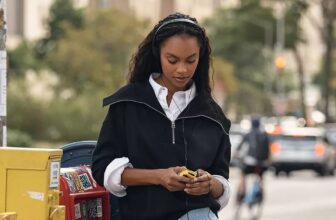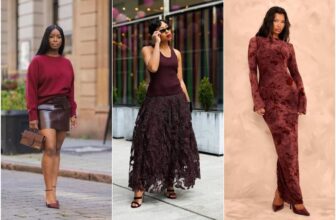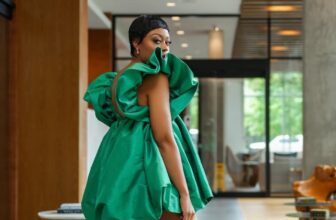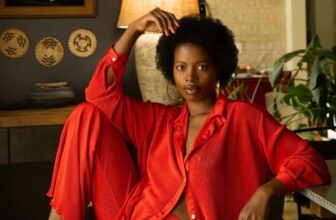Colorblock in fashion is a trend that involves combining solid blocks of different colors in one outfit, creating a striking and often unexpected visual effect.
Unlike patterns or prints, color-blocking in fashion focuses on the power of color itself, allowing each hue to stand out boldly. This trend first gained popularity in the 1960s, thanks to the Mod movement and fashion designers like Yves Saint Laurent, and it made a strong comeback in the 1980s.
Color-blocking appeals to those who appreciate the art of color theory and allows fashion enthusiasts to experiment with different color combinations, from complementary and analogous pairings to more daring contrasts.
The charm of this trend is found in its simplicity and versatility—no complex patterns or prints, just bold, pure color that’s able to shine through any outfit. Whether you’re dressing for a laid-back day or a more formal occasion, color-blocking can be tailored to fit any event.
It’s a trend that sparks creativity, giving you the freedom to combine colors in ways that express your personal style. Not just that, color-blocking in fashion can be strategically used to emphasize or downplay specific areas of your figure, making it a flattering option for various body types.
Ahead is a closer look at what color-blocking in fashion is, why it’s a trend worth embracing, and how you can wear it with confidence.
Origin of Color-blocking in Fashion
The origins of color-blocking can be traced back to the early 20th century, particularly to the art movements of De Stijl and Bauhaus. These movements emphasized simplicity, abstraction, and the use of pure colors.
Piet Mondrian, a Dutch painter and a key figure in the De Stijl movement, played a significant role in influencing color-blocking with his iconic grid paintings. Mondrian’s works featured bold, primary colors (red, blue, yellow) separated by black lines, creating a composition of color blocks that were both simple and striking.
This artistic approach to color would later influence the fashion industry, particularly in the mid-20th century, when designers began to experiment with similar concepts in clothing.
The 1960s were a transformative period for fashion, marked by a departure from the conservative styles of the previous decades. This era saw the emergence of Mod fashion, which was characterized by geometric patterns, bold colors, and a futuristic aesthetic.
Designers like Yves Saint Laurent were at the forefront of this movement, drawing inspiration from modern art to create garments that featured bold blocks of color. One of the most iconic examples of color-blocking from this period is Yves Saint Laurent’s Mondrian dress, introduced in 1965.
The dress was directly inspired by Piet Mondrian’s abstract paintings and featured blocks of primary colors divided by black lines. This design not only paid homage to modern art but also established color-blocking as a major fashion trend. The 1960s also saw the influence of Pop Art, with its vibrant, bold colors, further cementing colorblocking as a fashionable and avant-garde choice.
The 1980s also saw the rise of power dressing, with women wearing color-blocked suits that combined strong, contrasting colors to project confidence and authority. The use of color in this way became a symbol of empowerment, reflecting the cultural shifts of the time.
While the 1990s brought a minimalist approach to fashion, color-blocking persisted in more subtle forms, with designers exploring muted tones and monochromatic palettes. However, the trend experienced a significant resurgence in the 2010s, when it was reimagined by fashion houses like Prada and Balenciaga. This modern revival mixed both bold and minimalist interpretations, making color-blocking a versatile and enduring trend. Its appeal lies in its ability to make a powerful visual impact while allowing for personal expression.
Today, colorblock in fashion remains popular, from high fashion runways to streetwear, and its adaptability ensures that it will continue to influence and evolve within the fashion industry for years to come.
How to Master Colorblock in Fashion
Now that you understand the appeal of color-block in fashion, here are some tips on how to wear this trend with confidence:
Start with Basic Pairings
If you’re new to color-blocking an outfit, ease into the trend with simple color pairings. Begin with two complementary colors, like navy and yellow or burgundy and blue. These combinations are visually pleasing and easy to pull off.
For a more understated approach, try incorporating a neutral base color like black, white, or gray, and add a pop of color with a brighter hue. This way, you can dip your toes into the color-blocking trend without feeling overwhelmed by too many bold colors.
Play with Color Wheel Combinations
To create a harmonious outfit, use the color wheel as your guide. Complementary colors, which are opposite each other on the color wheel (such as blue and orange or red and green), create a high-contrast look that’s guaranteed to turn heads.
Analogous colors, which sit next to each other on the wheel (like blue and green or pink and purple), offer a more subtle, yet still eye-catching, appearance. Understanding color theory is key to mastering color-block in fashion.
Mix Textures and Fabrics
Colorblocking isn’t just about the colors you choose—it’s also about the textures and fabrics you pair together. Experiment with mixing different materials, like a silky blouse with a wool skirt, or a leather jacket with a cotton dress. The contrast in textures adds depth and interest to your outfit, making the color blocks stand out even more.
Use Accessories to Enhance the Look
Accessories are an essential part of colorblock in fashion. A brightly colored bag, shoes, or statement jewelry can tie your outfit together and add an extra layer of interest. For example, pairing a yellow bag with a green dress or adding a yellow scarf to a purple top can create a good color-blocked look. Don’t be afraid to use accessories to experiment with the colorblocking trend on a smaller scale before committing to a full outfit.
Monochromatic Color-blocking
Monochromatic color-blocking involves wearing different shades of the same color. This approach is perfect for those who prefer a more subtle take on the trend.
For instance, you could pair a light blue blouse with navy trousers or a range of pinks from pale blush to deep magenta. Monochromatic outfits are often sleek and sophisticated, making them ideal for both professional and casual settings.
Try Bold Combinations
For those who love to stand out, don’t be afraid to experiment with bold and unconventional color combinations. Bright pink and neon green, cobalt blue and fiery red, or mustard yellow and teal can make a powerful fashion statement. The key is to wear your outfit with confidence and own the look.
Balance Proportions
Experiment with different proportions when color-blocking. For instance, you can wear an oversized, bright-colored top with slim-fit, neutral-colored pants or a voluminous skirt in a bold hue paired with a fitted, understated blouse. Playing with proportions adds visual interest and ensures that the color-blocking doesn’t overwhelm your frame.
Colorblock in Layers
Layer different color-blocked pieces for a complex, multi-dimensional look. For example, layer a color-blocked blazer over a top in a complementary color, or wear a color-blocked sweater over a dress. Layering allows you to experiment with more colors and textures while staying warm and stylish.
Incorporate Neutral Colors
While color-blocking often involves bold colors, incorporating neutral tones like beige, white, gray, or black can help balance the look and make it more wearable.
Colorblock Separately
Colorblocking separately involves selecting individual color-blocked items, such as tops, skirts, or accessories, and wearing them as separate elements of your outfit. For instance, you could pair a color-blocked blouse with neutral trousers or a color-blocked skirt with a solid top.
This flexible approach allows you to enjoy the visual impact of color-blocking without committing to an entirely color-blocked ensemble. By coordinating color-blocked pieces with neutral or complementary items, you create a balanced, stylish look that highlights the unique aspects of each piece.
Add a Patterned Piece
Incorporate a patterned piece into your color-blocked outfit to add an extra layer of visual interest. For example, pair a pair of jeans with a patterned shirt or accessorize your color-blocked dress with a patterned scarf or a geometric-print belt.
This approach adds complexity and can make the color-blocking more dynamic. Just ensure the pattern incorporates one or more of the colors from your main color-blocked outfit to maintain cohesion.
Confidence Is Key
No matter how you choose to colorblock, the most important element is confidence. Wearing bold, contrasting colors can be a little daunting, but with the right attitude, it becomes a fun and empowering experience. Embrace the trend, experiment with different combinations, and let your personality shine through your color choices.






